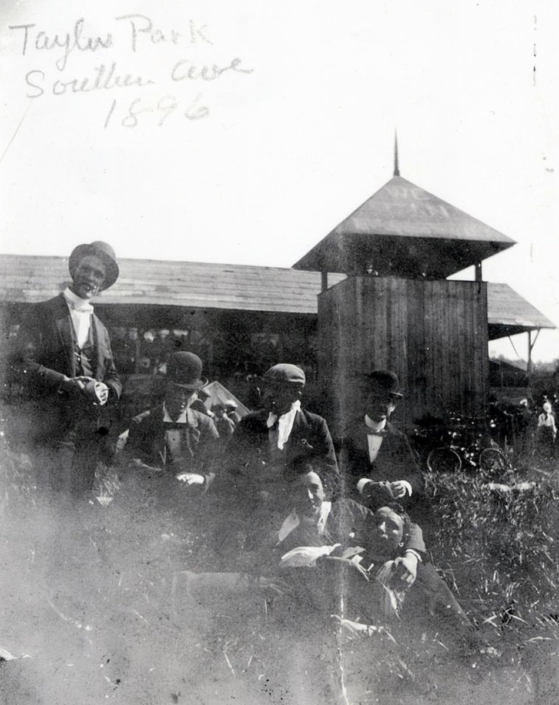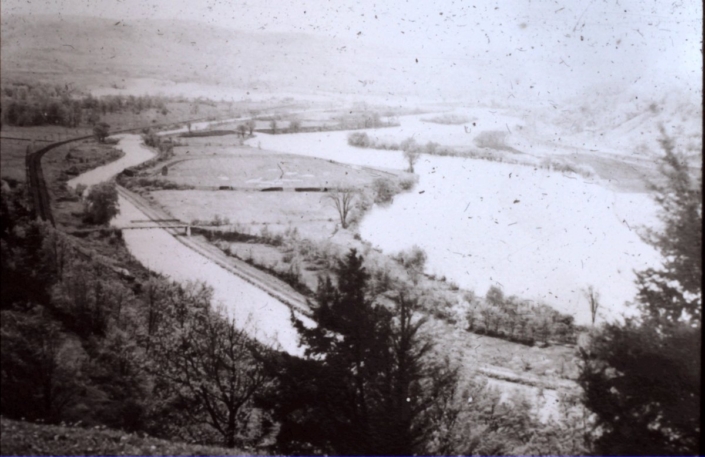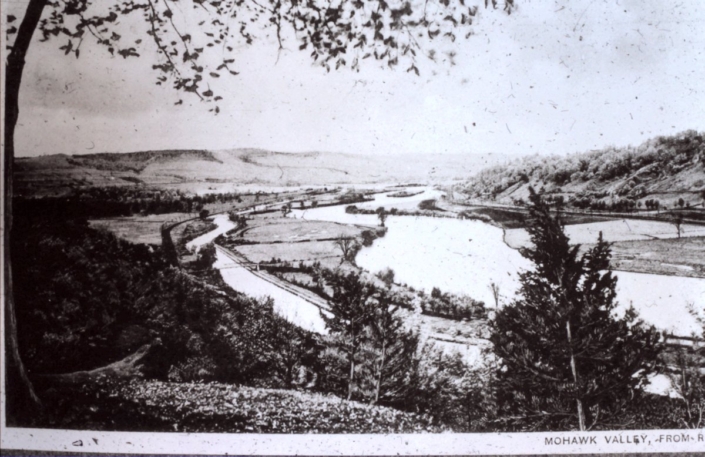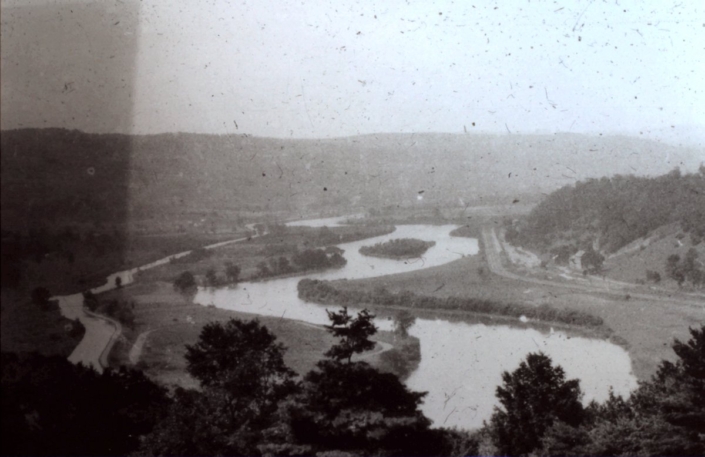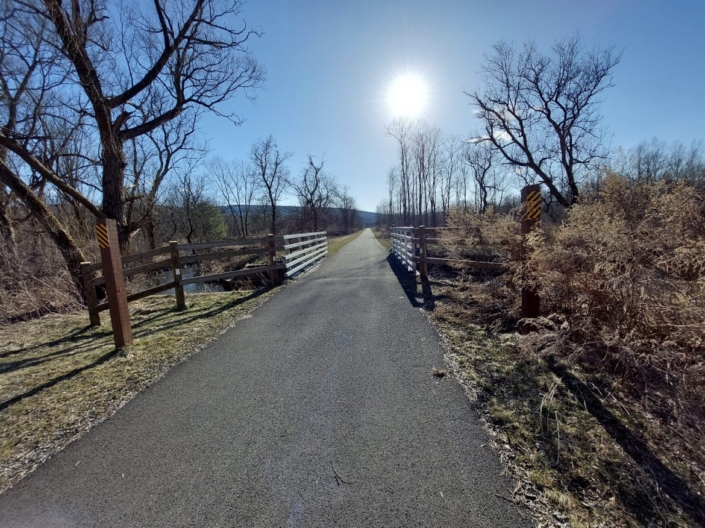Writing Series Article by David Krutz
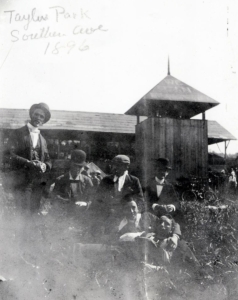 LITTLE FALLS — There is a ghost on the south side of Little Falls. But unlike most specters, this ghost is not shy about showing itself if you know where and how to look.
LITTLE FALLS — There is a ghost on the south side of Little Falls. But unlike most specters, this ghost is not shy about showing itself if you know where and how to look.
From the air, follow the Mohawk River westward from Little Falls for perhaps a mile or so to a point opposite the intersection of Gun Club Road and Route 5. There on the south bank of the river, the phantom will come into focus in the form of a large, oval-shaped ring of trees. It is the shadowy vestige of the long forgotten Taylor Driving Park.
In the spring of 1891 six businessmen from Little Falls formed the Taylor Driving Park Association and capitalized it with $2,500 ($60,000 in 2016 dollars). A parcel of land about one mile to the west of Southern Avenue between the Erie Canal and the Mohawk River was eased from Earl Van Antwerp. Long known as a “playground,” this area of river flats was quite familiar to local picnickers and had been a shooting range for the Little Falls Gun Club.
Thirty men and 10 teams of horses were soon put to work. A one-half mile track was laid out and graded. A grandstand, capable of accommodating more than 400 people was built, as were a large barn, a judges’ stand, fencing and other outbuildings. In the track’s infield a dirt baseball diamond was constructed.
The Taylor Driving Park (named after the association’s president) was opened on Aug. 11, 1891 with two days of harness racing.
Trotters and pacers from the area competed for purses that reached $400 ($10,000 in 2016 dollars.) On both days, the grounds were packed with race goers. While the horseflesh did not reach top class thoroughbred standards, bettors were as enthusiastic as those at a Saratoga meet.
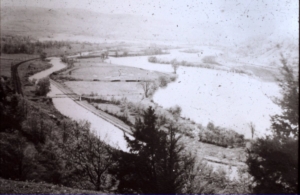 Over the next five seasons, harness and bicycle racing entertained those with the 25 cent admission price. The local nine, the Baileys, regaled Little Falls baseball fans by squaring off against area teams. On occasion their foe was of topnotch caliber, such as The Fearless, an African-American team from Utica, or an all-female team from Ohio, the Cincinnati Red. Most games featured a home run or two, “by reason of the ball being knocked into the crowd and under the carriages where the fielders could not readily recover it.”
Over the next five seasons, harness and bicycle racing entertained those with the 25 cent admission price. The local nine, the Baileys, regaled Little Falls baseball fans by squaring off against area teams. On occasion their foe was of topnotch caliber, such as The Fearless, an African-American team from Utica, or an all-female team from Ohio, the Cincinnati Red. Most games featured a home run or two, “by reason of the ball being knocked into the crowd and under the carriages where the fielders could not readily recover it.”
Every Wednesday and Saturday afternoon fans could be seen making their way to the park for a day of racing or baseball. There were three ways to reach the grounds. For those energetic enough and with shoe leather to burn a walk of a mile or so along the Erie Canal towpath was the cheap route. Or, for those with access to a horse and carriage, a dirt road which merged with Southern Avenue reached the raceway’s backstretch. But the third means, by water, was the preferred and most pleasurable choice. For this purpose, A. B. Van Gorder shuttled his steam-yacht, the Titus Sheard, every 10 minutes from Leigh’s Landing (near the present day Burke Bridge) to Taylor Park.By 1896 the Taylor Driving Park Association was in severe financial difficulty — often being unable to even pay their rent. Attendance at most events had dropped dramatically as the severe depression that hit the United States in the early 1890s, capped off by the Panic of 1896, hit home. But the final blow, the death knell of Taylor Park, can be attributed to one of the worst disasters that ever hit the Little Falls community.
June 18, 1896 was supposed to be a red-letter day in Little Falls.
Elite “wheelmen” from throughout the state were in town to compete in an all-important New York State Circuit cycling race out at “Taylor.” The weather was perfect and a large crowd was anticipated. After the races a parade and other festivities had been organized.
The crew of the Titus Sheard expected it to be a busy day ferrying race goers to and from the park. Van Buren Youngs, the boat’s engineer, and Edward Tresselt, its pilot, had steam up early and had brought the Titus Sheard to Leigh’s Landing to pick up the day’s first batch of passengers. Fourteen people boarded and the boat began its short trip up the canal at a leisurely 15 miles per hour. Less than 10 minutes later, the steam-yacht slowed to discharge its passengers at the landing at Taylor Park. No one knows what went wrong next but as engineer Youngs reached down to make some adjustment on the boiler it exploded with such force that the 750-pound engine was thrown into the canal and metal shrapnel landed on the grandstand. Ten of the 16 people on the boat were killed instantly and two others would die shortly after. Horrified spectators, who had cheerfully watched the T.W. Sheard docking, now witnessed body parts littering the towpath and floating in the canal. Ghastly visions of a decapitated man and of a mangled corpse being thrown onto the deck of another boat would remain with many all the rest of their days.
The Titus Sheard disaster ended steam boat travel to the park. With this conduit of customers dried up, the Taylor Driving Park soon closed. Unable to pay hundreds of dollars in back rent the Taylor Park Association folded and the park’s buildings were sold at public auction for $125 to John Ingalls. Mr. Ingalls hoped to reopen the park but his dream never came to fruition. It is believed that soon afterwards he had the structures razed and the lumber recycled. Into the 1930s, the park was still being used for pick-up baseball and football games but even they faded away.
From ground level, no trace of Taylor Driving Park is discernible today.
Numerous flood control berms and Barge Canal dredging waste, which rises 20 feet or more above grade on the park’s western edge, along with more than 100 years of Mother Nature have removed all trace of the raceway. The Erie Canal bed and towpath, along with its stone walls and bridge abutments, are still quite visible but the ghost of what was Taylor Driving Park can only be seen and imagined from above.
This article was first published May 12, 2016, in the Observer Dispatch.

 LITTLE FALLS — There is a ghost on the south side of Little Falls. But unlike most specters, this ghost is not shy about showing itself if you know where and how to look.
LITTLE FALLS — There is a ghost on the south side of Little Falls. But unlike most specters, this ghost is not shy about showing itself if you know where and how to look. Over the next five seasons, harness and bicycle racing entertained those with the 25 cent admission price. The local nine, the Baileys, regaled Little Falls baseball fans by squaring off against area teams. On occasion their foe was of topnotch caliber, such as The Fearless, an African-American team from Utica, or an all-female team from Ohio, the Cincinnati Red. Most games featured a home run or two, “by reason of the ball being knocked into the crowd and under the carriages where the fielders could not readily recover it.”
Over the next five seasons, harness and bicycle racing entertained those with the 25 cent admission price. The local nine, the Baileys, regaled Little Falls baseball fans by squaring off against area teams. On occasion their foe was of topnotch caliber, such as The Fearless, an African-American team from Utica, or an all-female team from Ohio, the Cincinnati Red. Most games featured a home run or two, “by reason of the ball being knocked into the crowd and under the carriages where the fielders could not readily recover it.”